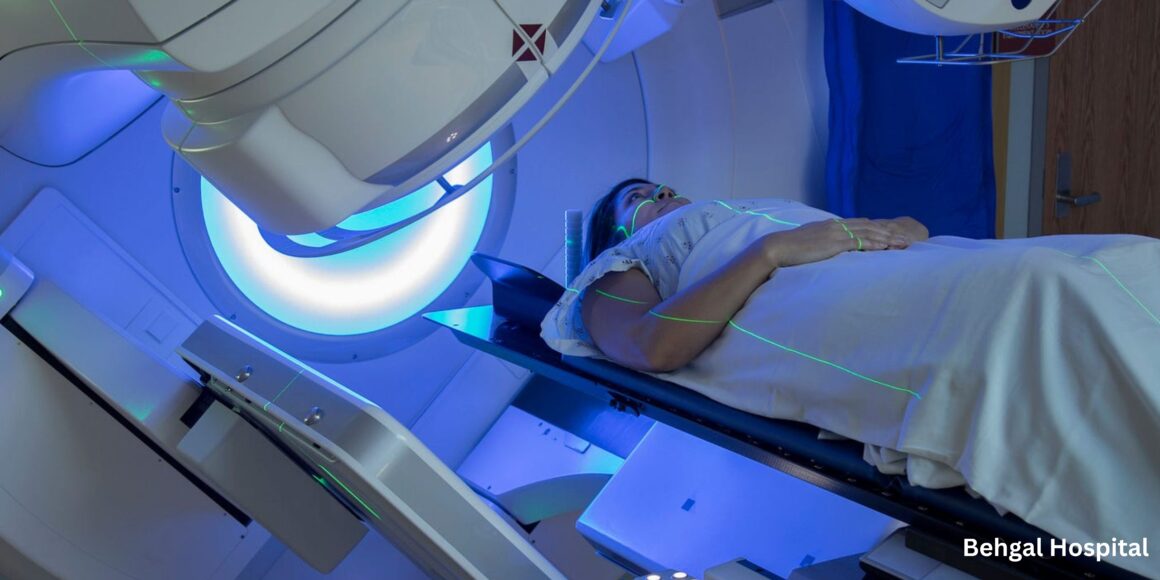Introduction
Radiotherapy, also known as radiation therapy, is a crucial aspect of modern cancer treatment and is used by oncologists worldwide to treat various types of cancer. This advanced medical procedure involves using high doses of radiation to destroy cancer cells, shrink tumors, and alleviate symptoms. Due to its importance in fighting cancer, patients and their families need to have a comprehensive understanding of the principles, procedures, benefits, and potential side effects of radiotherapy.
What is Radiation Therapy?
Radiation therapy, also known as radiotherapy, uses high-energy radiation to target and kill cancer cells. This treatment can be delivered externally, using machines to direct radiation beams at the cancerous area, or internally, through radioactive substances placed near cancer cells inside the body. The main goal is to damage the DNA of cancer cells, which prevents them from growing and dividing.
Types of Radiation Therapy
Radiation therapy can be broadly categorized into two main types:
External Beam Radiation Therapy (EBRT)
Linear Accelerators: These machines generate high-energy x-rays or electrons to treat cancers located anywhere in the body.
Proton Therapy: This technique uses protons instead of X-rays, allowing for more precise targeting of tumors, thus minimizing damage to surrounding healthy tissues.
Internal Radiation Therapy (Brachytherapy)
Interstitial Brachytherapy: Radioactive sources are placed directly into or near the tumor.
Intracavitary Brachytherapy: Radioactive sources are placed within a body cavity, such as the cervix or uterus.
Systemic Radiation Therapy: Radioactive substances, typically iodine, are swallowed or injected and travel through the bloodstream to target cancer cells.
How Radiation Therapy Works
Radiation therapy functions by damaging the DNA within cancer cells. When these cells absorb the radiation, their DNA structure is changed, preventing them from continuing to divide and grow. While normal cells are also impacted by radiation, they have a greater ability to repair themselves compared to cancer cells. Treatment is meticulously planned to maximize damage to cancer cells while minimizing exposure to healthy tissues.
Planning and Delivery of Radiation Therapy
The process of radiation therapy involves several critical steps:
Consultation and Evaluation: Patients undergo a thorough evaluation, including medical history, physical examination, and imaging tests such as CT scans, MRI, or PET scans. This helps the radiation oncologist determine the precise location, size, and shape of the tumor.
Simulation: During this phase, the patient is positioned on a treatment table, and a simulation CT scan is performed to map out the exact area to be treated. Custom immobilization devices may be used to ensure the patient remains in the same position during each treatment session.
Treatment Planning: The radiation oncologist, along with a team of medical physicists and dosimetrists, develops a treatment plan. This plan includes the type of radiation to be used, the dosage, and the number of treatment sessions. Advanced software is used to create a three-dimensional model of the tumor and surrounding tissues, allowing for precise targeting.
Treatment Delivery: Radiation treatments are typically delivered over several weeks, with sessions scheduled five days a week. Each session lasts only a few minutes, although the entire appointment may take longer due to setup and positioning.
Benefits of Radiation Therapy
Radiation therapy offers several key benefits:
Effective Cancer Control: It can effectively shrink tumors and kill cancer cells, contributing significantly to cancer control and eradication.
Pain and Symptom Relief: Radiation therapy can help alleviate symptoms such as pain, bleeding, and obstruction caused by tumors.
Minimally Invasive: Unlike surgery, radiation therapy is non-invasive and does not require incisions or lengthy recovery times.
Organ Preservation: It allows for the preservation of organs and tissues, which might otherwise need to be removed surgically.
Side Effects of Radiation Therapy
While radiation therapy is a potent tool against cancer, it can also lead to side effects, which can vary depending on the treatment area and the individual patient.
Skin Reactions: Skin in the treated area may become red, irritated, or dry. Moisturizers and gentle skin care can help manage these symptoms.
Fatigue: Many patients experience fatigue during and after treatment. Rest, balanced nutrition, and light exercise can help mitigate this.
Nausea and Vomiting: Radiation to the abdominal area can cause gastrointestinal side effects, which can be managed with medication and dietary adjustments.
Hair Loss: Radiation to the head and neck may result in hair loss in the treated area.
Long-Term Effects: Depending on the treatment site, long-term effects may include changes in organ function, secondary cancers, or other health issues.
Advances in Radiation Therapy
Ongoing research and technological advancements continue to improve the effectiveness and safety of radiation therapy:
Image-Guided Radiation Therapy (IGRT): This technique uses real-time imaging during treatment to ensure precise delivery of radiation.
Intensity-Modulated Radiation Therapy (IMRT): IMRT allows for varying the intensity of radiation beams, optimizing the dose distribution, and sparing healthy tissues.
Stereotactic Body Radiotherapy (SBRT): SBRT delivers very high doses of radiation in a small number of sessions, targeting tumors with sub-millimeter precision.
Adaptive Radiation Therapy (ART): ART involves adjusting the treatment plan based on changes in the tumor size or position during treatment.
Conclusion
Radiotherapy is a crucial component of cancer treatment, offering hope and healing to countless patients. Understanding its mechanisms, benefits, and potential side effects can assist patients and their families in making well-informed decisions about their care. As technology continues to advance, radiotherapy will become even more precise and effective, solidifying its role in the ongoing battle against cancer.





Leave a Reply